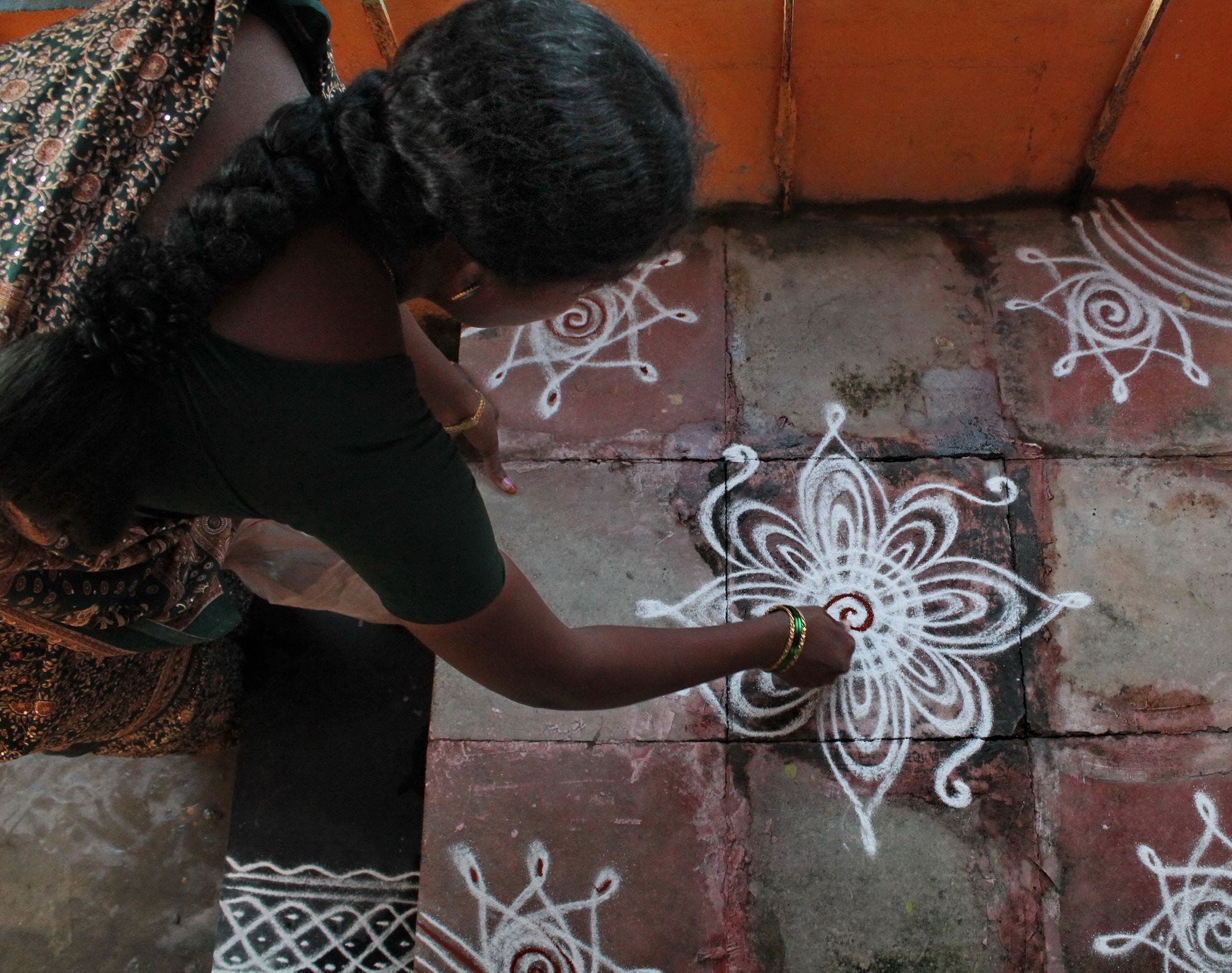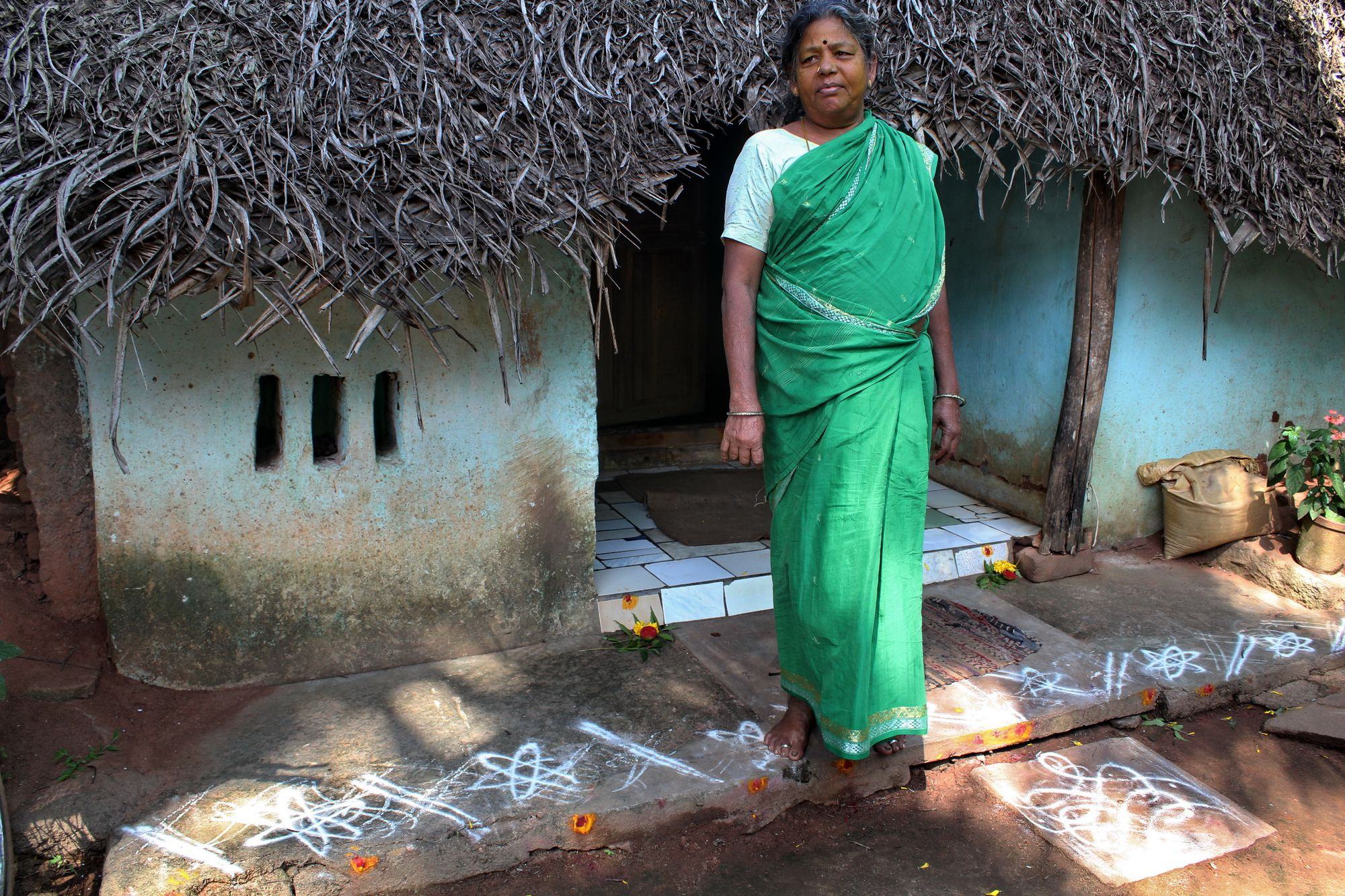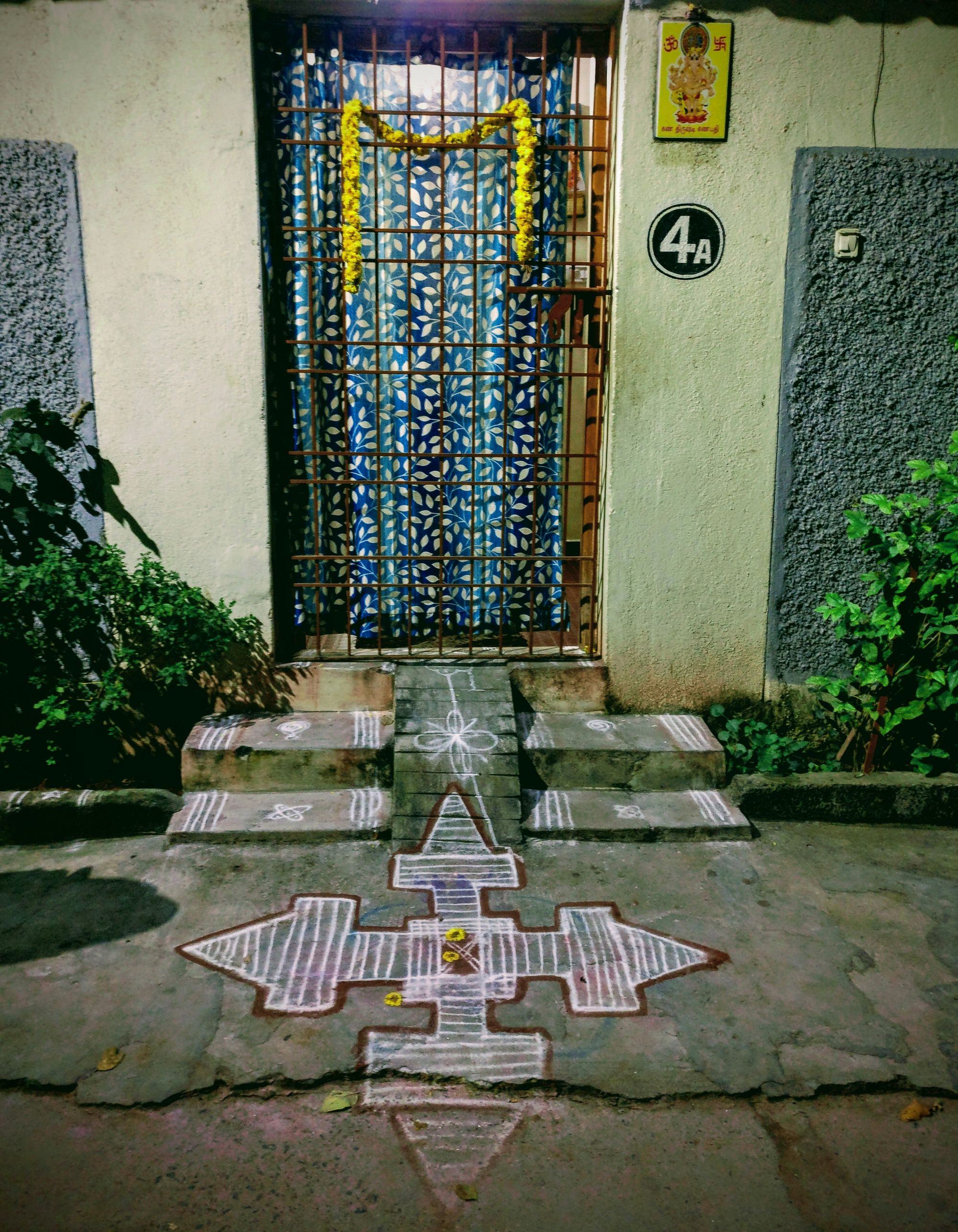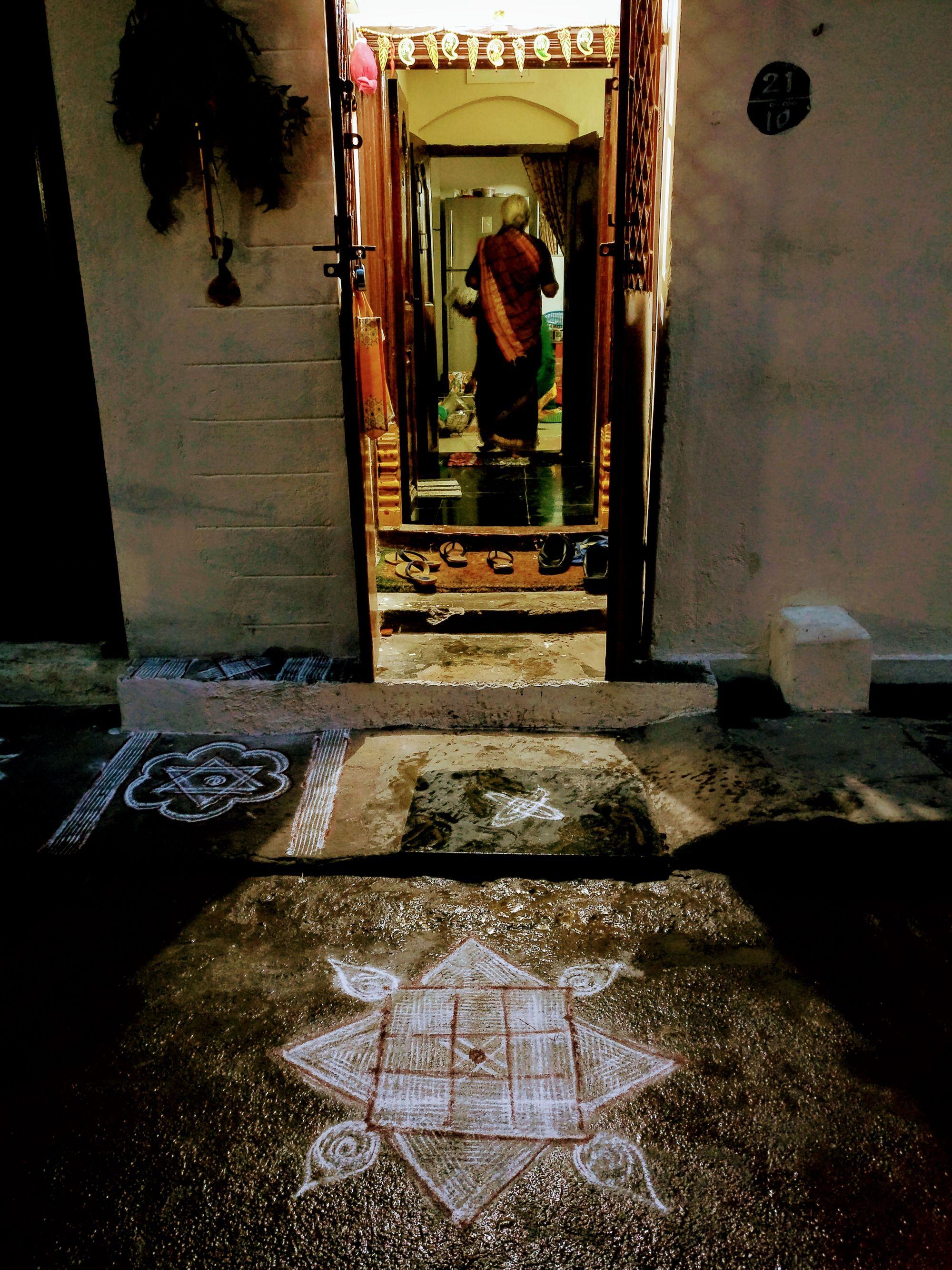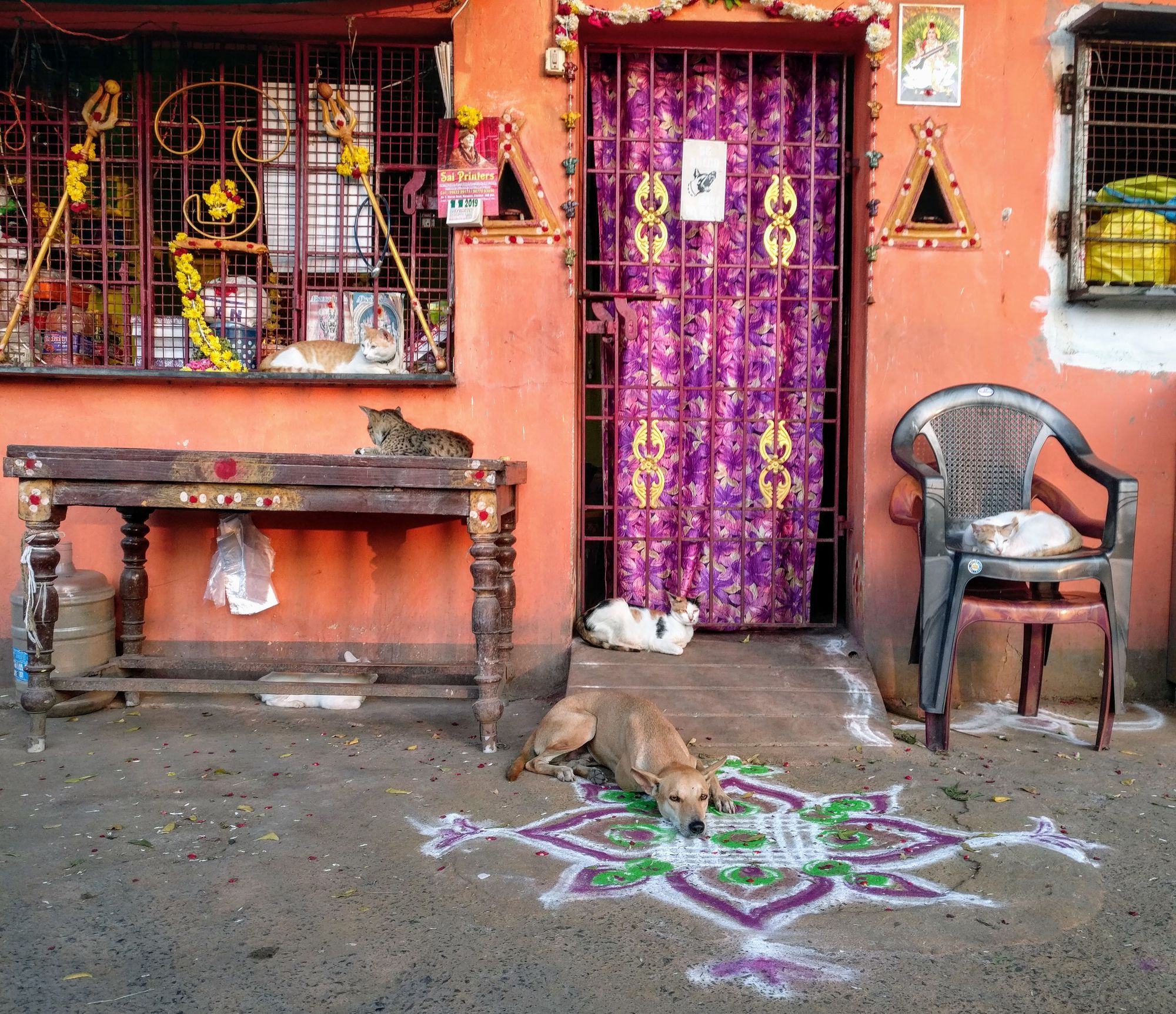The threshold kolam
The front door is considered to be the most vulnerable orifice of the house just like the mouth of a person and therefore needs protection. Drawing a kolam on the threshold is one way to prevent evil influences from entering.
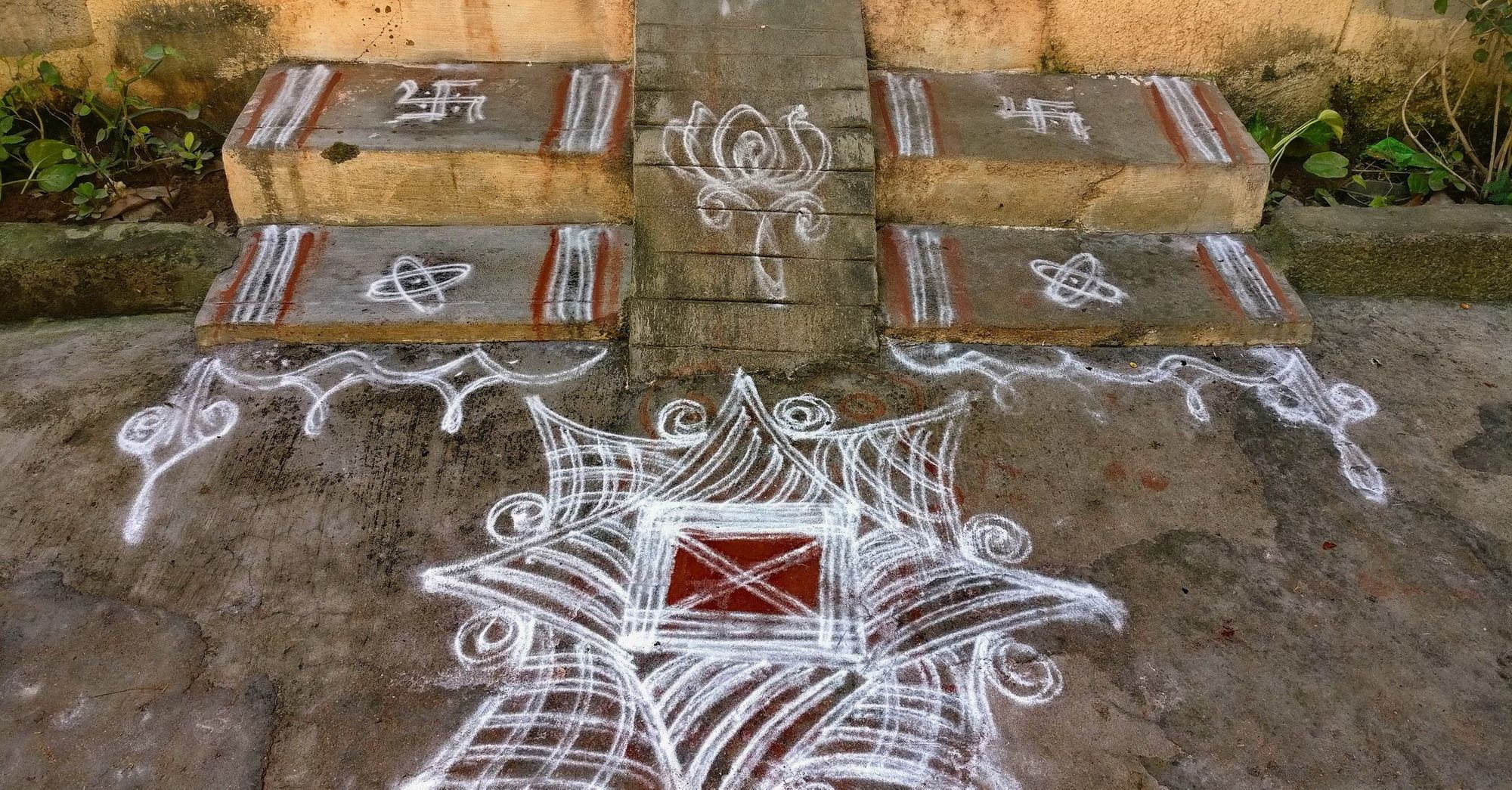
« In the early morning in particular, the threshold is not
to be left blank (without an auspicious design). If a
woman leaves her threshold blank, her family also
becomes a blank (without children). »
Sdhp 3.v 5-6. Strîdharmapaddhati, Tryambakayajvan
In Tamil culture, the word for door vâcal is related to vâyil (gate, door, opening) and vâi for the mouth. The front door is considered to be the most vulnerable orifice of the house just like the mouth of a person and therefore needs protection. Drawing a kolam on the threshold is one way to prevent evil influences from entering. In order to thwart and appease the evil eye and avoid misfortune, women often place a pumpkin with a painted grimacing face, and next to it, a lemon cut in half and smeared with kumkumam.
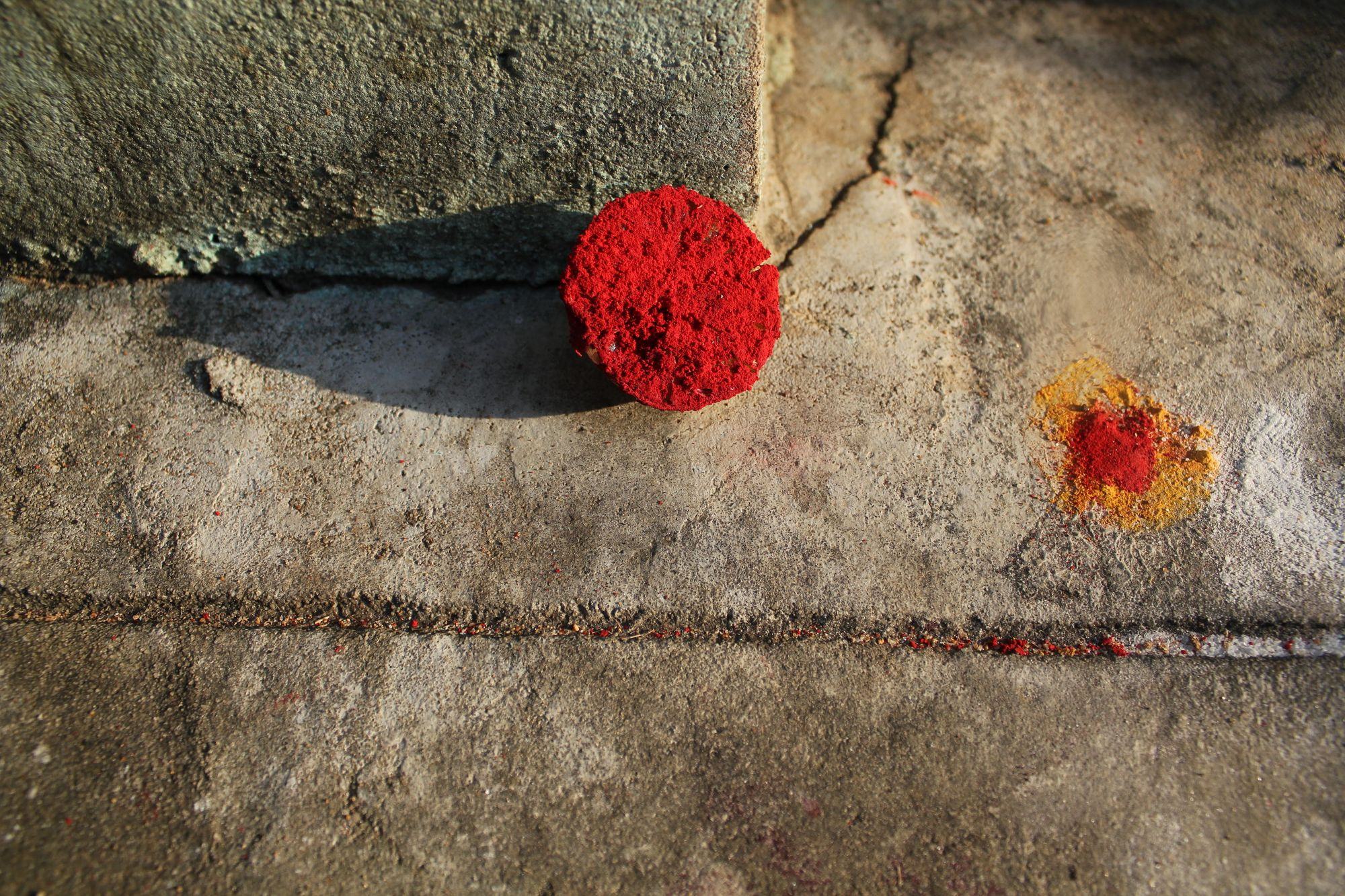
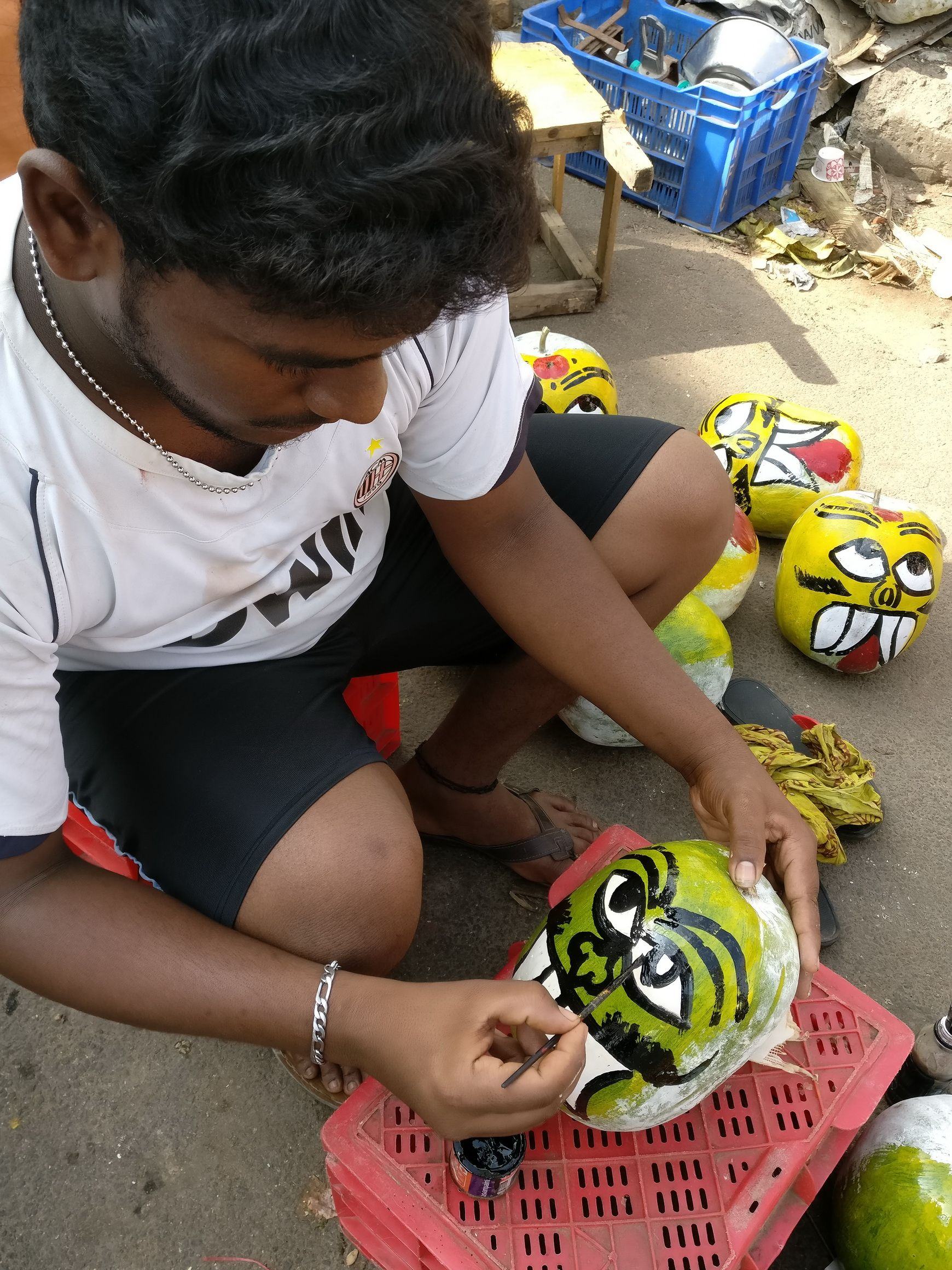
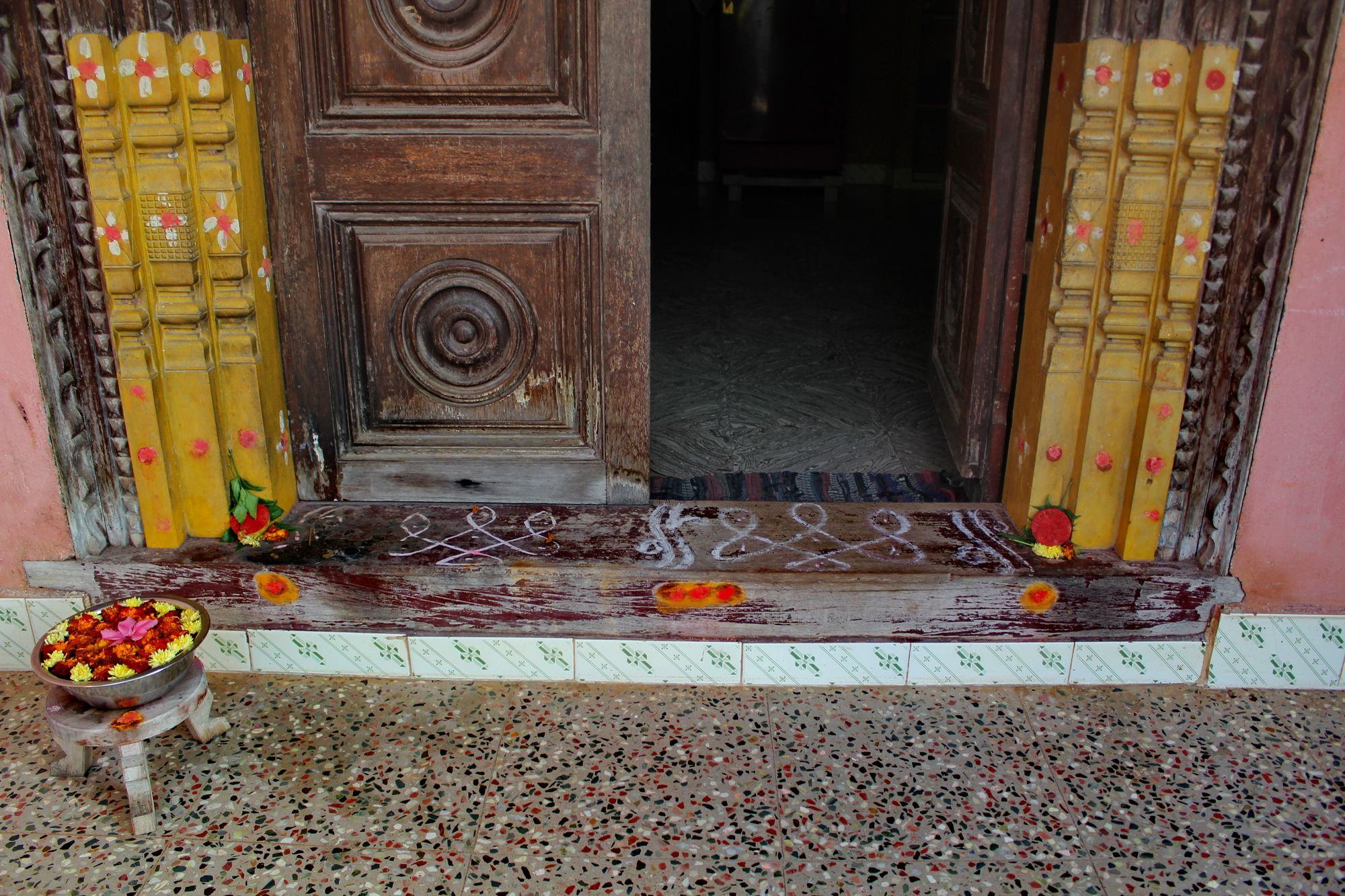
When the drawing is present, it conveys to the neighbourhood that the home is fine, that good health, abondance, and hospitality prevail. When the kolam becomes larger and more elaborate, the home surely celebrates an important event (birth, mariage, anniversary or a religious function). When there is no kolam, it symbolises mourning, menstruations or the absence of women. Sometimes, to hinder potential thieves who interpret the absence of a kolam at the front door as an opportunity to try their luck, neighbours or housemaids take turns drawing a kolam in front of the empty house until its residents return.
